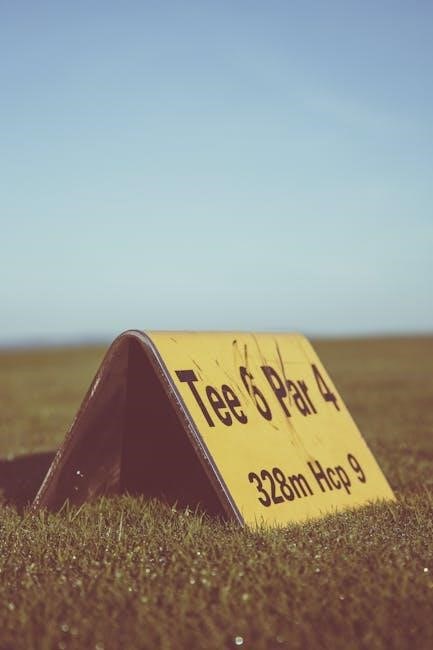Conway’s Game of Life: A Comprehensive Guide
Conway’s Game of Life‚ a captivating cellular automaton‚ operates with elegantly simple rules‚ often detailed in accessible PDF documentation for enthusiasts and researchers alike․
These foundational rules govern cell survival and reproduction‚ forming the basis for emergent complexity within the simulated world‚ readily available in downloadable guides․
Understanding these rules – survival‚ death by under/overpopulation‚ and reproduction – is crucial for exploring the game’s fascinating patterns‚ often outlined in comprehensive PDFs․
Numerous online resources provide PDFs detailing the game’s mechanics‚ initial configurations‚ and the exploration of still lifes‚ oscillators‚ and spaceships‚ enhancing understanding․
Historical Context and Origins
Conway’s Game of Life didn’t emerge in a vacuum; its roots lie in earlier explorations of mathematical systems and the concept of cellular automata․ The groundwork was laid by Stanislaw Ulam and John von Neumann in the 1940s‚ who investigated self-replicating automata – machines capable of creating copies of themselves․
Von Neumann envisioned a complex machine built on a grid‚ a precursor to Conway’s simpler‚ yet equally powerful‚ system․ PDF documentation often highlights this lineage‚ tracing the intellectual path from theoretical machines to a playable game․
John Conway‚ in 1970‚ distilled these ideas into a set of remarkably concise rules operating on a two-dimensional grid․ These rules‚ easily found in readily available PDF guides‚ sparked immediate fascination․ The game’s initial appeal wasn’t about achieving a specific goal‚ but observing the emergent patterns arising from simple interactions․
Early dissemination relied on word-of-mouth and publications‚ with PDFs becoming a crucial medium for sharing the rules and exploring the game’s intricacies amongst a growing community of enthusiasts․
John Conway and the Creation of the Game
British mathematician John Horton Conway‚ renowned for his playful approach to complex mathematical concepts‚ conceived of the Game of Life in 1970․ He wasn’t initially aiming for a profound discovery‚ but rather a demonstration of cellular automata for a lecture; However‚ the resulting system proved far more captivating than anticipated․
Conway deliberately chose simple rules – easily summarized and frequently detailed in accessible PDF guides – to maximize the potential for emergent behavior․ He wanted a system where complexity arose organically‚ not through pre-programmed instructions․
The core rules‚ defining cell survival‚ death‚ and reproduction‚ were meticulously crafted to balance stability and dynamism․ Numerous PDFs dissect these rules‚ explaining their impact on pattern formation․
Conway himself was fascinated by the game’s unpredictable nature‚ and the fact that it could exhibit Turing completeness‚ a testament to its computational power‚ often explained in detailed PDF analyses․
Von Neumann’s Universal Constructor
John von Neumann‚ a pioneer in computer science and game theory‚ explored the concept of self-replicating automata in the 1940s․ He envisioned a machine capable of constructing copies of itself‚ laying the groundwork for ideas later realized in Conway’s Game of Life․

Von Neumann’s work involved a complex model based on a Cartesian grid‚ a precursor to the simpler grid used in the Game of Life․ The core principle was to define rules for construction and replication‚ concepts thoroughly explained in available PDF documentation․
Conway simplified von Neumann’s model‚ distilling it into the elegant set of rules that govern the Game of Life․ These rules‚ often detailed in introductory PDFs‚ allow for the emergence of self-replicating patterns․
The Game of Life demonstrates that complex behavior‚ including self-replication‚ can arise from remarkably simple rules‚ a testament to von Neumann’s foundational ideas‚ readily accessible through PDF resources․
The Cellular Automaton Concept
Conway’s Game of Life is a prime example of a cellular automaton – a discrete model studied in mathematics and computer science․ These systems evolve in discrete time steps based on a set of deterministic rules applied to a grid of cells․
The fundamental principle involves cells changing state (typically between ‘alive’ and ‘dead’) according to their neighbors’ states‚ a process meticulously defined in readily available PDF guides․
Understanding the core rules – survival‚ death‚ and reproduction – is key to grasping the behavior of cellular automata‚ comprehensively explained in introductory PDF documentation for the Game of Life․
These PDFs often illustrate how simple rules can generate complex‚ emergent patterns‚ showcasing the power of cellular automata to model various phenomena‚ from physics to biology‚ making it a fascinating field of study․

Core Rules of the Game
Conway’s Game of Life’s core rules‚ detailed in accessible PDFs‚ dictate cell fate: survival‚ death from under/overpopulation‚ and reproduction based on neighborhood states․
Rule 1: Survival
Rule 1‚ meticulously documented in Game of Life PDF guides‚ states that a live cell will survive to the next generation if‚ and only if‚ it is surrounded by two or three live neighbors․
This seemingly simple condition is fundamental to the game’s dynamics‚ preventing both immediate extinction through loneliness and overcrowding‚ as detailed in numerous online resources and downloadable PDFs․
The PDFs often visually illustrate this rule‚ showcasing how a cell with precisely two or three adjacent live cells remains active‚ continuing the pattern’s evolution․
Understanding this survival criterion is paramount; cells with fewer than two neighbors die of underpopulation‚ while those with more than three succumb to overpopulation‚ as clearly explained in the PDF documentation․
This delicate balance‚ outlined in the rules within the PDF‚ is the cornerstone of the emergent complexity observed in Conway’s Game of Life․

Rule 2: Death by Underpopulation
Rule 2‚ consistently detailed in Game of Life PDF resources‚ dictates that any live cell with fewer than two live neighbors will die in the subsequent generation – a fate known as death by underpopulation․
These PDF guides emphasize that this rule simulates a lack of sufficient support for the cell’s continued existence‚ leading to its inevitable demise‚ a core concept in the game’s dynamics․
Visual representations within the PDFs often demonstrate this rule‚ showing isolated cells or those with only one neighbor fading into inactivity during the next timestep․
The PDF documentation clarifies that this isn’t a gradual decline‚ but an immediate transition to a dead state‚ highlighting the discrete nature of the simulation․
Understanding this rule is crucial‚ as it prevents the formation of excessively sparse patterns and contributes to the overall evolution of the Game of Life‚ as explained in the PDF․
Rule 3: Death by Overpopulation
Rule 3‚ thoroughly explained in Game of Life PDF documentation‚ states that any live cell with more than three live neighbors dies due to overpopulation‚ a critical aspect of the simulation’s dynamics․
These PDF guides illustrate how excessive stimulation‚ represented by numerous surrounding live cells‚ leads to a cell’s demise‚ mirroring real-world limitations on growth and resource availability․
Detailed diagrams within the PDFs visually demonstrate this rule‚ showcasing cells surrounded by four or more neighbors transitioning to a dead state in the next generation․
The PDF materials emphasize that‚ like underpopulation‚ this is an instantaneous process‚ reflecting the discrete nature of the cellular automaton and its defined ruleset․
Comprehending this rule is vital for understanding pattern formation and stability within the Game of Life‚ as detailed in the comprehensive PDF resources available online․
Rule 4: Reproduction
Rule 4‚ meticulously detailed in Game of Life PDF guides‚ dictates that any dead cell with exactly three live neighbors becomes a live cell‚ representing reproduction and growth within the simulation․
These PDF resources illustrate how this rule fosters the emergence of complex patterns and structures‚ as new cells are ‘born’ into favorable environments with optimal neighbor counts․
Visual examples within the PDFs clearly demonstrate how a dead cell‚ surrounded by precisely three live cells‚ transitions to a live state in the subsequent generation․
The PDF materials highlight that reproduction is also an instantaneous process‚ governed solely by the immediate neighborhood configuration‚ reinforcing the game’s deterministic nature․
Understanding this rule is fundamental to grasping the dynamic evolution of the Game of Life‚ as explained in the readily accessible and informative PDF documentation․

Understanding the Game’s Mechanics
PDF guides illuminate the Game of Life’s mechanics: generations‚ grid states‚ neighborhood definitions‚ and seed patterns‚ revealing the interplay of simple rules․
Generations and Timesteps
Conway’s Game of Life unfolds not continuously‚ but in discrete steps called generations․ Each generation represents a single moment in time‚ where the state of every cell is updated simultaneously based on the established rules․
A timestep essentially is one generation; it’s the interval during which the entire grid is evaluated and a new generation is born․ PDF documentation frequently emphasizes this discrete nature‚ as it’s fundamental to understanding the game’s behavior․
These PDFs often illustrate how complex patterns emerge from the repeated application of these rules across successive generations․ The concept of a timestep is crucial for analyzing how patterns evolve‚ stabilize‚ or oscillate over time‚ providing a framework for predicting future states․
Understanding generations and timesteps is essential for grasping the game’s dynamic nature‚ as detailed in readily available PDF resources for enthusiasts․
The Grid and Cell States
Conway’s Game of Life takes place on a two-dimensional‚ orthogonal grid of square cells․ This grid is typically infinite in extent‚ though practical implementations use finite grids with various boundary conditions‚ often detailed in PDF guides․
Each cell within this grid exists in one of two possible states: alive or dead․ These binary states are the foundation of the game’s dynamics‚ and PDF documentation consistently highlights their importance․
The rules of the game dictate how these states change from one generation to the next‚ based on the number of living neighbors․ Comprehensive PDFs often visually represent these states and their transitions․
Understanding the grid structure and the two fundamental cell states is paramount to comprehending the game’s mechanics‚ as thoroughly explained in accessible PDF resources․
Neighborhood and Moore Neighborhood
Determining a cell’s fate in Conway’s Game of Life hinges on examining its neighbors․ The standard neighborhood considered is the Von Neumann neighborhood‚ encompassing the directly adjacent cells – north‚ south‚ east‚ and west – often illustrated in PDF guides․
However‚ the Moore neighborhood‚ including diagonally adjacent cells‚ is also frequently discussed‚ providing a broader view of a cell’s surroundings‚ and detailed explanations are available in PDF documentation․
The rules of the game apply based on the count of live cells within this defined neighborhood․ PDF resources clearly delineate how these neighborhood counts influence cell survival or death․
While the Von Neumann neighborhood is standard‚ understanding the Moore neighborhood offers a different perspective on cellular interactions‚ as explored in advanced PDF analyses of the game’s dynamics․
Initial Configurations and Seed Patterns
The starting arrangement of live cells‚ known as the initial configuration or seed pattern‚ profoundly impacts Conway’s Game of Life’s evolution․ Simple seeds can lead to surprisingly complex outcomes‚ detailed in numerous PDF guides․
Common seed patterns‚ like the glider‚ block‚ and beacon‚ are frequently showcased in PDF documentation‚ serving as excellent starting points for exploration and understanding the game’s dynamics․
These patterns demonstrate how the simple rules interact to create emergent behavior․ PDF resources often categorize seed patterns by their resulting behavior – still lifes‚ oscillators‚ or spaceships․
Experimenting with different initial configurations is key to grasping the game’s potential․ Comprehensive PDFs provide a wealth of examples and insights into the effects of various seed arrangements․

Advanced Concepts and Discoveries
PDF resources unlock deeper understanding of Conway’s Game of Life‚ revealing complex patterns like spaceships and oscillators born from simple rules․
These guides detail emergent behaviors and the fascinating interplay of cells‚ showcasing the game’s surprising computational power and intricate designs․
Still Lifes and Patterns
PDF documentation extensively catalogs Conway’s Game of Life’s fascinating still lifes – stable configurations that remain unchanged across generations‚ demonstrating the rules’ inherent stability․
These patterns‚ often simple yet elegant‚ provide a foundational understanding of how the game’s rules interact to create enduring structures‚ detailed within downloadable guides․

Beyond basic still lifes‚ PDFs explore more complex patterns‚ including blocks‚ beehives‚ and loaves‚ showcasing the diverse possibilities arising from the core four rules․
Researchers utilize these documented patterns to analyze the game’s behavior and explore its computational capabilities‚ often referencing comprehensive PDF collections․
Understanding these static forms is crucial for grasping the game’s dynamics‚ as they serve as building blocks for more complex‚ evolving patterns‚ readily available in PDF format․
The study of still lifes illuminates the delicate balance between cell survival and death‚ as defined by Conway’s ingenious rules․
Oscillators and Periodic Patterns
PDF resources dedicated to Conway’s Game of Life meticulously document oscillators – patterns that cycle through a finite sequence of states‚ showcasing dynamic behavior governed by the rules․
These periodic patterns‚ like the blinker and the toad‚ demonstrate the game’s capacity for rhythmic change‚ often illustrated with clear diagrams within downloadable PDF guides․
More complex oscillators‚ such as the pentadecathlon‚ reveal intricate interactions between cells‚ thoroughly analyzed and presented in detailed PDF documentation․
Researchers utilize these documented oscillators to study the game’s temporal dynamics and explore the emergence of predictable behavior from simple rules‚ referencing PDF collections․
Understanding oscillators is vital for comprehending the game’s non-equilibrium states and the fascinating interplay between stability and change‚ readily available in PDF format․
The study of these patterns highlights how Conway’s rules can generate surprisingly complex and repeating sequences․
Spaceships and Moving Patterns
PDF guides on Conway’s Game of Life extensively cover spaceships – patterns that translate themselves across the grid‚ demonstrating the game’s capacity for sustained movement based on its rules․
The most famous example‚ the glider‚ is a five-cell pattern that travels diagonally‚ frequently illustrated and explained in detail within downloadable PDF documentation․
More complex spaceships‚ like the light-weight spaceship (LWSS)‚ showcase intricate designs and movement patterns‚ thoroughly analyzed in advanced PDF resources․
These moving patterns demonstrate how simple rules can lead to emergent locomotion‚ a key aspect of the game’s captivating dynamics‚ often detailed in PDF collections․
Studying spaceships provides insights into the game’s ability to transport information and create complex interactions across the grid‚ readily available in PDF format․
Understanding these patterns is crucial for exploring the game’s potential for self-replication and complex behavior․
Gliders and Their Significance
PDF documentation on Conway’s Game of Life consistently highlights the glider as a foundational element‚ a five-cell pattern exhibiting sustained diagonal movement governed by the game’s rules․
Its significance stems from being the smallest known spaceship‚ demonstrating the potential for self-propagation and complex behavior within the simple cellular automaton‚ detailed in PDF guides․
The glider’s predictable trajectory allows for the construction of “glider guns‚” patterns that periodically emit gliders‚ a concept thoroughly explained in advanced PDF resources․
These guns demonstrate the game’s capacity for creating repeating patterns and transmitting information‚ a core concept explored in downloadable PDF analyses․
Understanding the glider is crucial for grasping the game’s Turing completeness‚ as it can be used to construct logic gates and simulate computation‚ as shown in PDFs․
The glider represents a fundamental building block for more complex structures and patterns within the Game of Life․

Computational Power and Complexity
PDF resources reveal Conway’s Game of Life achieves Turing completeness via its simple rules‚ simulating computation and exhibiting emergent complexity from basic interactions․
Detailed PDFs demonstrate how Turing machines can be constructed within the game‚ showcasing its surprising computational capabilities and intricate pattern formations․
Turing Completeness Explained
Conway’s Game of Life’s remarkable ability to simulate any Turing machine stems from its deceptively simple rules‚ a concept thoroughly explored in numerous PDF documents and academic papers․
Turing completeness signifies that the game‚ despite its limited instruction set – the four core rules governing cell behavior – can theoretically perform any computation a universal computer can․
PDF guides often illustrate this by demonstrating how logic gates (AND‚ OR‚ NOT) can be constructed using Life’s patterns‚ forming the building blocks for complex computational circuits․
These constructions‚ detailed in accessible PDFs‚ involve carefully designed initial configurations that evolve over generations to mimic the behavior of digital logic․
Essentially‚ the game’s grid and cell states act as memory‚ while the rules themselves function as the processing unit‚ enabling universal computation within a cellular automaton․
The availability of these PDF resources makes understanding this complex concept more approachable for enthusiasts and researchers alike‚ demystifying the game’s computational power․
Simulating Turing Machines

Detailed PDF documentation showcases how Conway’s Game of Life can meticulously simulate a Turing machine‚ a foundational concept in computer science‚ using only its four core rules․
These PDF guides often present step-by-step constructions of Turing machine components – the tape‚ head‚ and state register – entirely within the Life grid․
The game’s cells represent the Turing machine’s tape‚ storing information as live or dead states‚ while glider patterns act as signal carriers and control mechanisms․
Complex logic gates‚ built from Life’s patterns and explained in PDFs‚ emulate the Turing machine’s read/write head and state transition functions․
By carefully manipulating initial configurations according to the game’s rules‚ any algorithm executable by a Turing machine can be replicated within Life․
These PDF resources demonstrate that the game isn’t merely a visual curiosity‚ but a powerful computational platform capable of universal computation․
Emergent Behavior and Complexity
PDF guides on Conway’s Game of Life highlight how remarkably complex patterns arise from its deceptively simple rules‚ demonstrating the power of emergent behavior;
These documents illustrate that despite only four basic principles governing cell interactions‚ the game generates unpredictable and often astonishingly intricate structures․
PDFs detail how simple initial configurations can evolve into stable “still lifes‚” oscillating patterns‚ or even self-replicating “spaceships‚” showcasing complexity․
The game’s behavior isn’t pre-programmed; it emerges from the local interactions of cells‚ a concept central to understanding complex systems․
Detailed PDF analyses reveal that Life exhibits properties akin to self-organization‚ adaptation‚ and even a form of “evolution” within its grid․
These resources emphasize that Life serves as a compelling model for exploring complex phenomena in fields like biology‚ physics‚ and computer science․
Applications in Computer Science
PDF documentation on Conway’s Game of Life frequently details its surprising relevance to computer science‚ extending beyond a mere recreational pursuit․
These resources explain how the game’s ability to simulate a Turing machine demonstrates its theoretical computational power‚ a key concept in algorithm design․
PDFs showcase how Life serves as a practical example for teaching concepts like cellular automata‚ parallel processing‚ and emergent computation․
The game’s grid-based structure lends itself to efficient implementation on parallel architectures‚ accelerating simulations and analyses․
Researchers utilize Life as a testbed for developing and evaluating algorithms for pattern recognition‚ image processing‚ and artificial life simulations․
PDF guides also explore Life’s connection to areas like cryptography and the study of complex adaptive systems‚ broadening its impact․

Resources and Further Exploration
Numerous PDFs detail Conway’s Game of Life rules‚ offering comprehensive guides for deeper understanding and exploration of this fascinating cellular automaton․
Online simulators and tools complement these PDF resources‚ allowing interactive experimentation with the game’s fundamental principles and patterns․
PDF Documentation and Rule Sets
Conway’s Game of Life boasts a wealth of readily available PDF documentation‚ catering to both novice players and seasoned researchers․ These documents meticulously outline the game’s core rules – survival‚ death by underpopulation‚ death by overpopulation‚ and reproduction – providing a foundational understanding of its mechanics․
Many PDFs delve into detailed explanations of initial configurations‚ seed patterns‚ and the resulting emergent behaviors․ You’ll find comprehensive rule sets‚ often including variations and extensions beyond the standard implementation․ Melissa Gymrek’s work‚ available as a PDF‚ offers a solid introduction to the game’s principles․
These resources frequently include visual examples‚ illustrating how the simple rules give rise to complex patterns like still lifes‚ oscillators‚ and spaceships․ Searching online for “Game of Life rules PDF” yields numerous options‚ from concise rule summaries to extensive academic papers exploring the game’s theoretical implications․
Online Simulators and Tools
Numerous online simulators provide interactive environments to explore Conway’s Game of Life‚ complementing the static information found in PDF rule sets․ These tools allow users to experiment with different initial configurations and observe the emergent patterns firsthand‚ solidifying their understanding of the game’s dynamics․
Many simulators offer features like adjustable grid sizes‚ speed controls‚ and the ability to load and save patterns․ While not PDF-based‚ they are invaluable for visualizing the rules in action․ Programming the game yourself‚ as some hobbyists do‚ further deepens comprehension of the underlying logic․
These interactive platforms often serve as excellent learning aids‚ allowing users to test hypotheses and explore the game’s complexity without the need for complex coding or mathematical analysis․ Combining simulator use with PDF documentation provides a holistic learning experience․
Variations and Extensions of the Game
Beyond the standard rules detailed in foundational PDF documentation‚ numerous variations of Conway’s Game of Life exist‚ expanding upon the core concept․ These modifications often involve altering the survival and birth conditions‚ leading to drastically different emergent behaviors and patterns․
David Hamp-Gonsalves’ circadian rhythm twist‚ for example‚ introduces time-dependent rules‚ influencing cell evolution based on simulated day-night cycles․ While not typically found in basic PDF guides‚ these extensions demonstrate the game’s flexibility․
Other variations explore different grid topologies (toroidal‚ spherical) or introduce additional cell states and interaction rules․ Exploring these extensions‚ often documented in specialized online resources‚ showcases the game’s potential for complex system modeling‚ building upon the original rules․
David Hamp-Gonsalves’ Circadian Rhythm Twist
David Hamp-Gonsalves’ innovative extension to Conway’s Game of Life introduces a fascinating circadian rhythm‚ influencing cell evolution based on a simulated day-night cycle․ This modification moves beyond the standard rules detailed in typical PDF guides‚ adding a temporal dimension to the simulation․
The core concept involves altering cell behavior based on a time-keeping mechanism‚ impacting survival and reproduction rates․ While comprehensive documentation in standard PDF format may be limited‚ online resources and project write-ups detail the implementation;
This twist demonstrates how even subtle alterations to the fundamental rules can yield dramatically different and complex patterns․ It highlights the game’s adaptability and potential for modeling biological rhythms‚ offering a compelling departure from the classic simulation‚ often explored through custom code and shared findings․